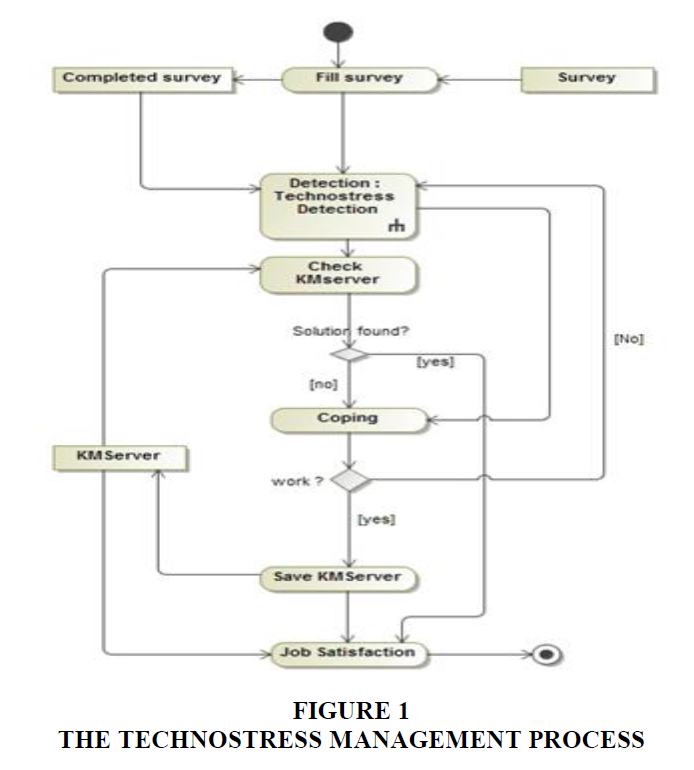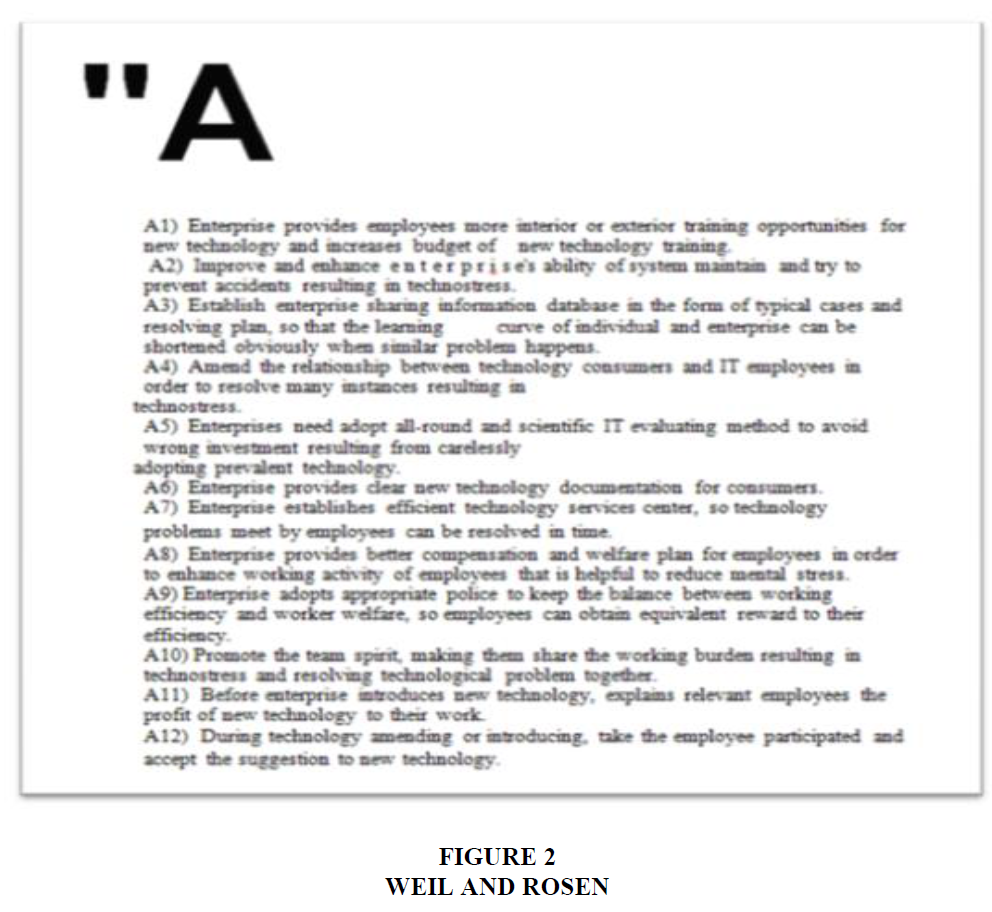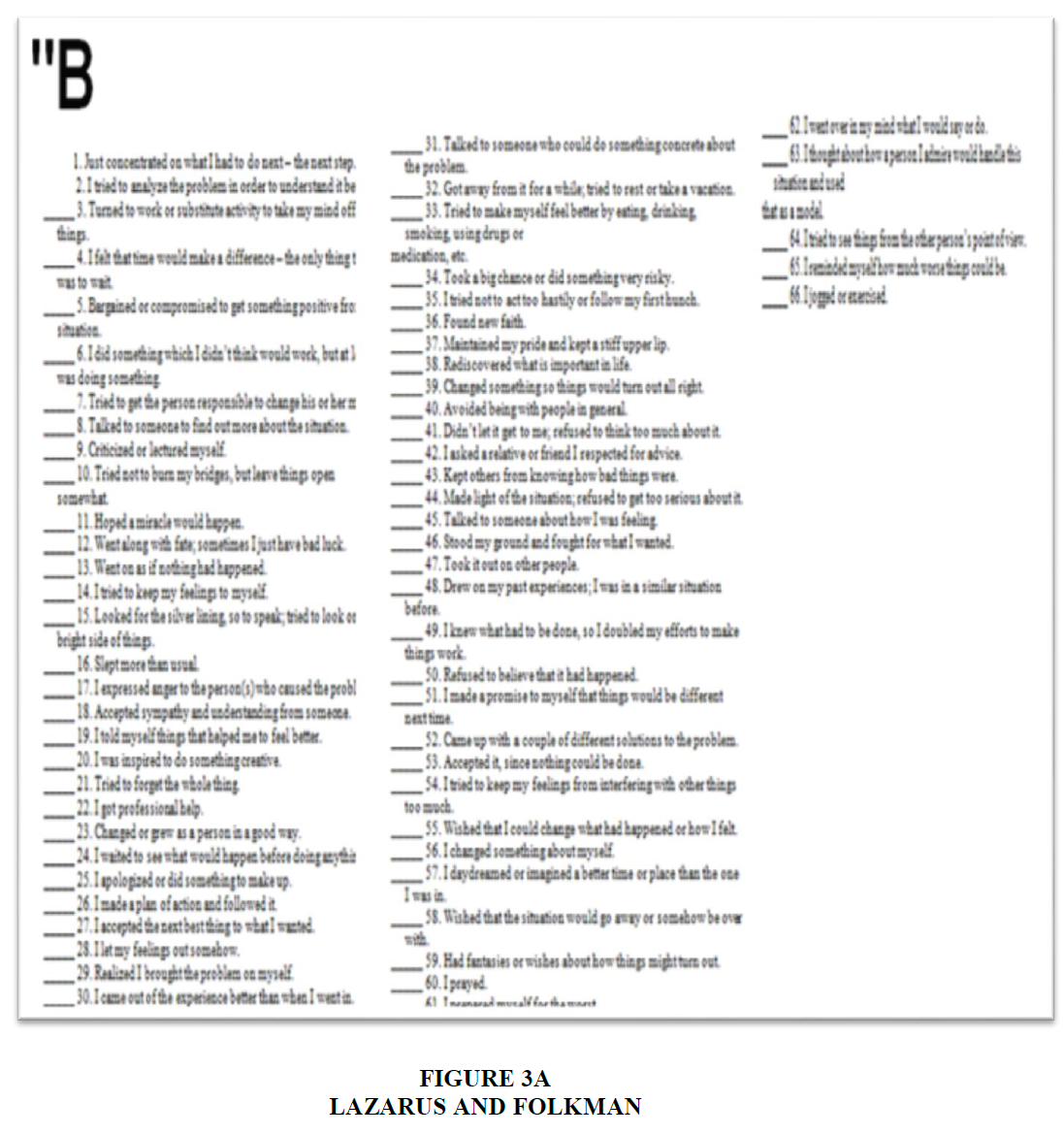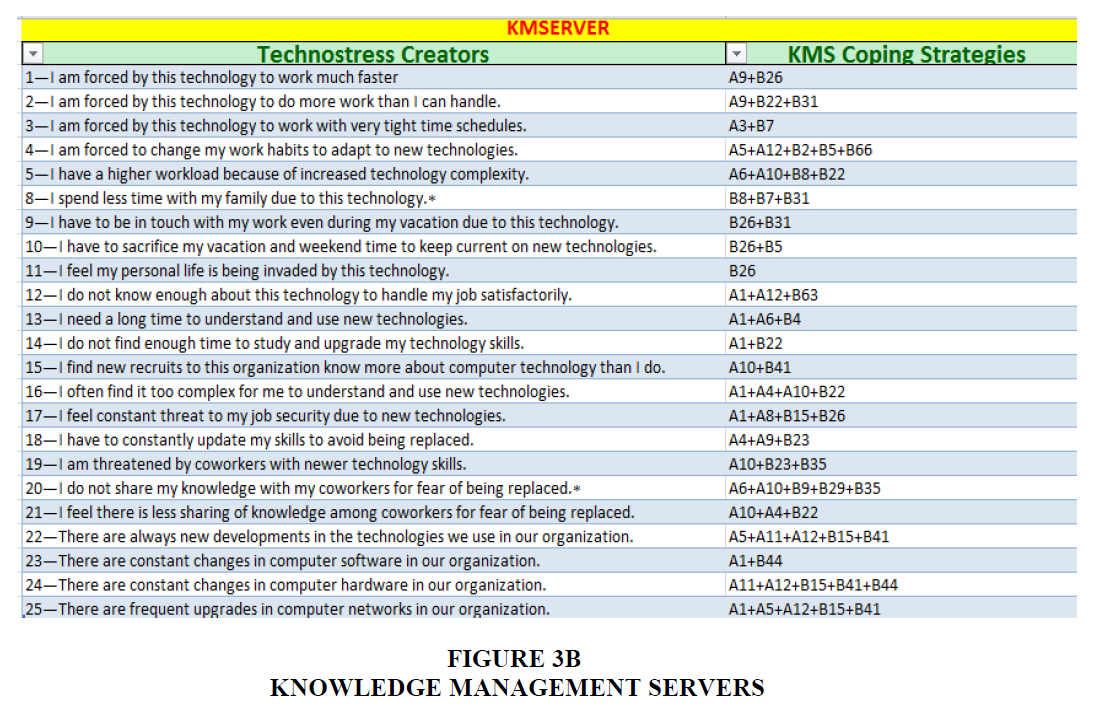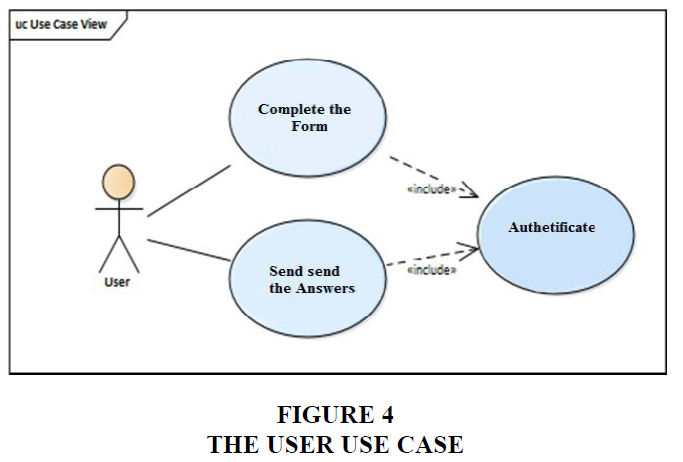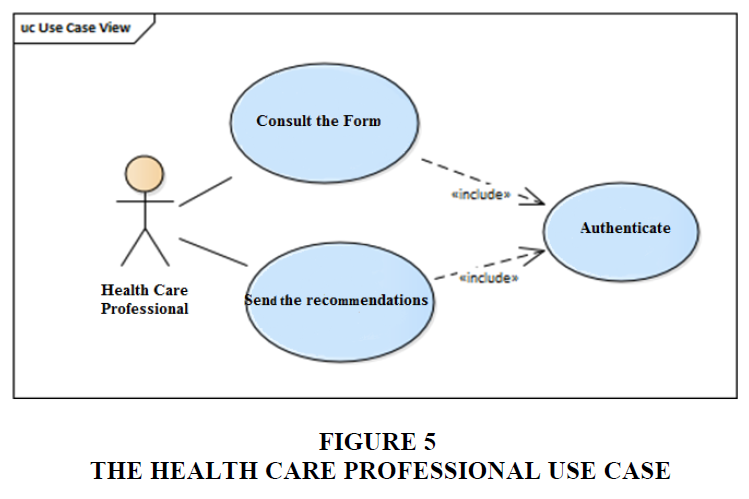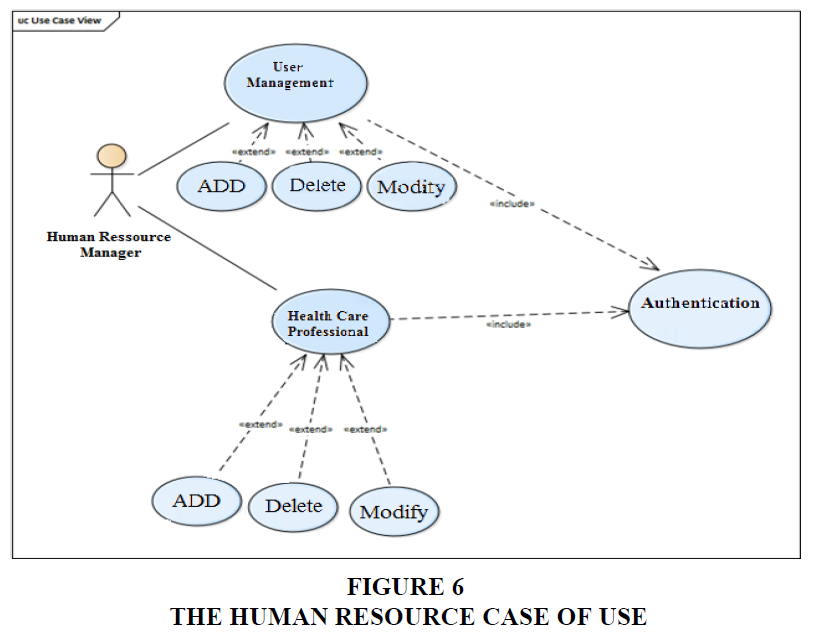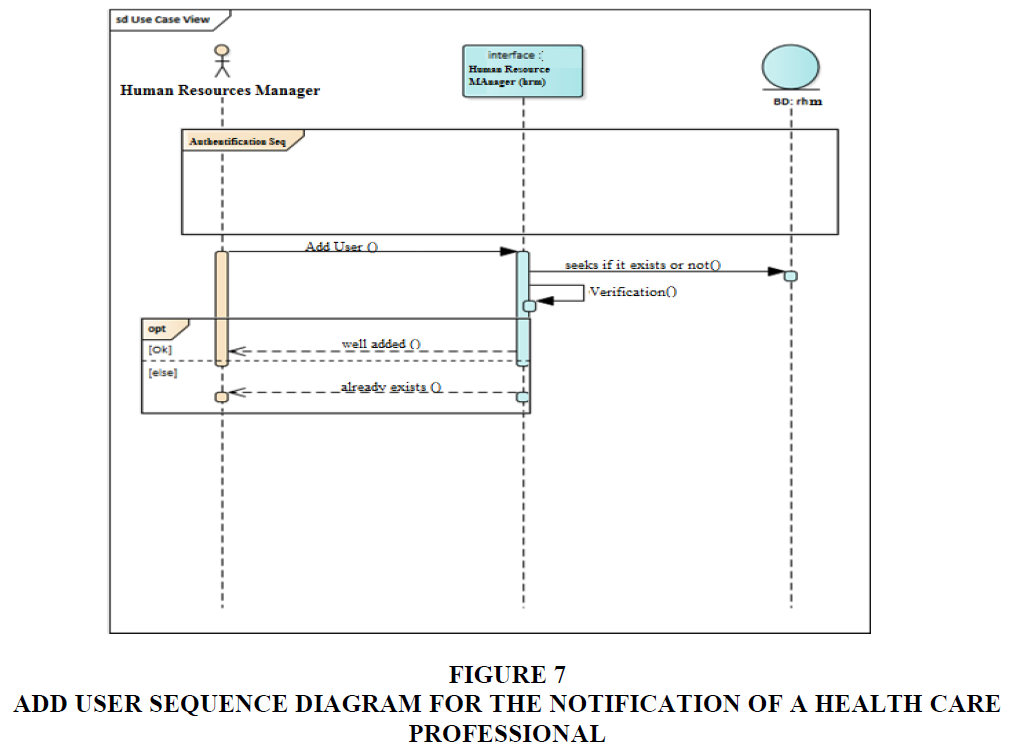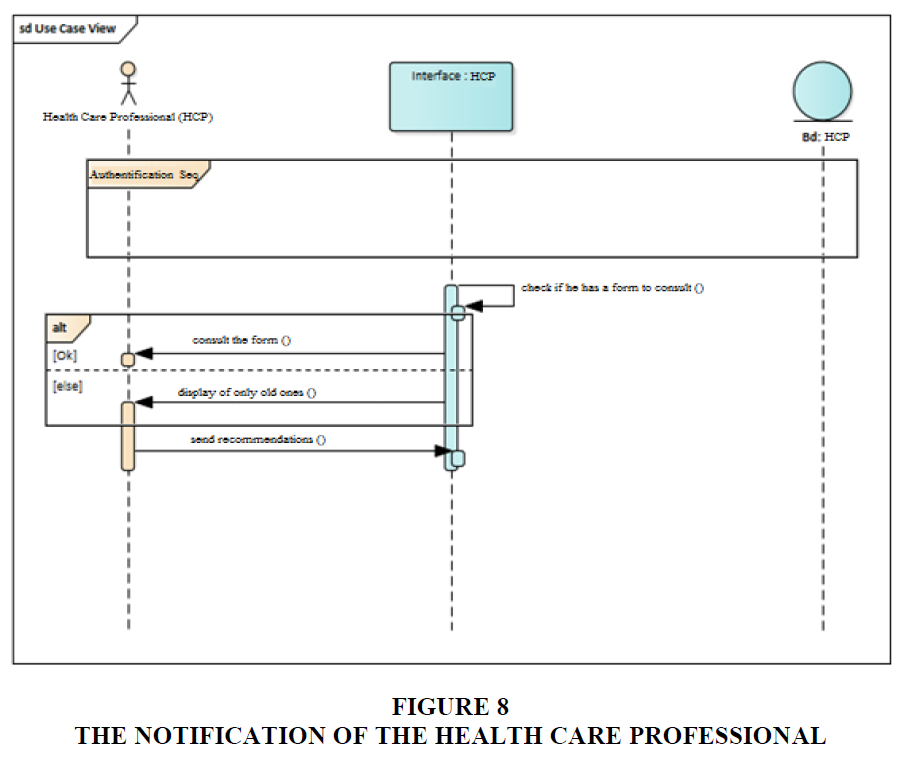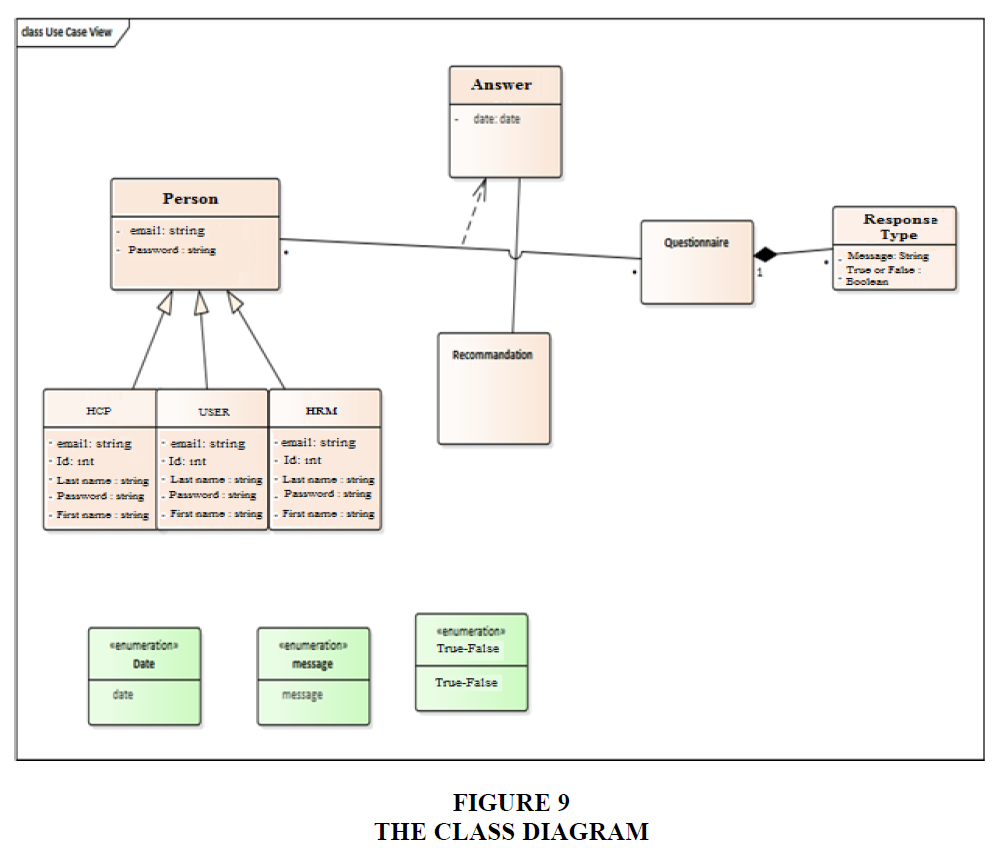Research Article: 2021 Vol: 20 Issue: 2
Computerizing Technostress Management: Toward an Artificial Intelligence Assisted Support and Diagnosis System
Mohamed Salah-Eddine, Hassan First University of Settat
Mustapha Belaissaoui, Hassan First University of Settat
Mahmoud El Hamlaoui, Mohammed V University in Rabat
Karima Salah-Eddine, Mohammed V University in Rabat
Abstract
In the Covid-19 era which is a period of crisis, remote work was a necessary response to this unprecedented crisis. However, in the post-pandemic world, decision-makers and top managers should by no means rush towards the adoption of telecommuting and the other Information and Communication Technologies (ICTs), without measuring employees’ attitudes and without providing them with necessary support in-order to avoid side effects of Technostress.
This paper presents an approach for Technostress Management that is capable of customizing the Coping Strategies (CSs) for every specific organization towards enabling Artificial Intelligence (AI) Technologies to handle this phenomenon. However, the rapid change and evolution of technologies push employees to continuously update their knowledge and learn new skills, which over time become a burden on their shoulders. This burden leads to the occurrence of a different type of stress called Technostress (TS). Health Care professionals deal with this type of stress by using some strategies called CSs.
The existing dissimilarities between organizations in terms of ICTs infrastructures, and Human Resource Policies, make the task of properly managing both TS and CSs for Managers and Health care professionals very complicated.
Therefore, we propose in this paper a web page solution that is capable of remotely managing the TS and the CSs, accordingly with the organization’s own ICTs specifications and internal policies. The suggested solution will allow organizations to be more independent of external non-specific guidelines, and to gradually build a high degree of control, awareness and expertise over the new upcoming TS appearances.
Keywords
Information and Communication Technologies, Coping Strategies, Technostress Management, Artificial Intelligence, Health Care Management, Human Resources Management, Covid-19, Mental Health.
Introduction and Literature Review
Driven by the sudden proliferation of Covid-19 pandemic, the forced turn toward remote ICT solutions, was a survival matter for many companies willing to accompany the lockdown situation. While on the other hand it was an unexpected change for many of their employees, this led to the emergence of new forms of health issues that we can associate to the general phenomenon of TS. One of these noticed problems is called (zoom fatigue) and it refers to the mental exhaustion associated with online video conferencing (Zoom Fatigue, n.d.). We think this situation is a clear warning to CEOs to pay more attention to the side effects induced by the use of ICTs in normal and lockdown times.
In the past decade a plethora of measures have been developed to assess and treat the phenomenon of TS which is described by professionals as a kind of stress experienced by individuals due to the use of ICTs. TS have been defined as “a state of excitement observed in some employees who are highly dependent on computers in their work” (Arnetz & Wiholm, 1997). One of the largely used definitions describes TS as a “Modern disease of adaptation caused by the inability to cope with new computer technologies in a healthy manner” (Brod, 1984). According to Brod's definition, in order to correctly fit the New Computer Technologies and ICTs, some of the largely used methods for dealing with TS are called the Coping Strategies (CSs) or TS Inhibitors as called by others (Ragu-Nathan et al., 2008).
Originally these strategies or mechanisms are partitioned into two categories: behavioral and psychological (Mick & Fournier, 1998), but for technological situations these strategies have been categorized into two significant groups: problem-focused strategies (behavioral) and emotion-focused strategies (psychological) (Beaudry & Pinsonneault, 2005; Folkman, 1984; Wang et al., 2008). Emotional-focused CSs are seen as indirect approaches used to reduce the stress by managing the emotions (Lazarus & Folkman, 1984), while problem-focused CSs are viewed as direct approaches (Hudiburg, 1996), meaning efforts used to solve the problems that were behind the creation of the stress (Pastorino & Doyle-Portillo, 2012).
The methods of coping are methods that require a relatively long period of time for the patient to practice them. Likewise, the evaluation and the testing of their efficacy by the health professionals and managers is time consuming; especially if the stressor is faced for the first time. The difficulty of this encounter which initially pushed us to work on the conception of this solution (Coping Methods) (Salah-Eddine et al., 2018 & 2019; Salah-Eddine & Belaissaoui, 2016).
Furthermore, the fact that each company has its proper internal management policies, decides for the choice of adopting the type of ICTs that best suit their needs. Knowing that the ICTs (the stressor conditions in our case) vary in terms of complexity, specialty, distributions, versions, etc., we therefore deduce that the type of TS experienced by employees will vary depending on the type of ICTs being used in different companies or enterprises. Hence the used CSs are also variable, situationally specific and context-dependent, which is in line with the findings of previous researches (Beaudry, 2009; Richmond & Skitmore, 2006). Accordingly, our solution has come to give companies’ managers the possibility to manage their TS problems, exploiting and re-using the records of past successful data, of the previous diagnosis and treatments of “Technostress-Coping” performed on the employees of the same company. These data can be applicable to all the branches of the company with same ICT infrastructures, which describe all information and communication infrastructures and systems (including firmware, hardware, software, networks and websites) used in the organization (Martucci et al., 2020).
This paper will continue along the same lines as our previous research (Salah-Eddine et al., 2018 & 2019; Salah-Eddine & Belaissaoui, 2016), into making the phenomena of TS more computerized, so it can be accessible for the community of data analytics and AI in general, by offering them a reliable structured data. The rest of this paper is organized as follows. Section II provides a brief reminder of our previous works and their relationship with the actual work, with a glimpse into the problem we face in order to test the solution, and the hypothesis we adopted in order to overcome this problem. In section III we present our solution's use case diagrams, which due to their simplistic nature, can be a good communication tools providing a high level view of the system to stakeholders and software developers. Then in section IV we follow up by talking of the major interfaces and steps of our solution. Finally, in Section V we conclude by a discussion of the benefits and gains one can get from this solution, and conclusion and perspectives.
Methodology
In our previous work (Salah-Eddine et al., 2018), we have presented our TS Management Process (Figure 1) in the form of an activity process that better emphasizes the treatments and make these easy to comprehend for the user. In the context of this work, finding a company willing to share with a third party such critical information concerning its technological infrastructure and the psychological aspects of its employees is a challenge. One can add to that the constraint of time needed in order to apply and check the effectiveness of the selected CSs, which can go from days to months depending on the type of triggering stressors and the significance of the patient's mental and physical state. In order to bypass these constraints and test our proposed solution, we assume that the whole time the CSs Process consumes was already fulfilled, which according to our same previous works means that the Knowledge Management Server (KMserver) has reached its maturity. This system is used by companies to help organize document by gathering, evaluating, and sharing valuable information (What is a Knowledge management system? (Freshdesk, n.d.). In our case, the KMserver records for each item of TS, the best coping strategies having already yielded fruitful results.
To test our prototype solution all along with the circumstances explained above, we have adopted a largely used questionnaire comprised of 23 items, developed by (Ragu-Nathan et al., 2002; Tarafdar et al., 2007) to measure the extent of TS perceived by people, and address each of these items accordingly with the literature on the subject. We chose arbitrarily two different types of CSs instruments from among many existing ones, first one is the Weil & Rosen instrument (Weil & Rosen, 1997) which is more problem-focused Figure 2. And the second one is the Ways of Coping Questionnaire (WCQ) (Folkman et al., 1988), which is more emotional-focused Figure 3A.
Assuming that these CSs have shown efficiency in the coping process, and according to our personal choice, we auto-assigned each of the 23 Technostress Creators (TCs) items with a variable number of CSs from the two instruments. Weil & Rosen Instrument (reference) is represented by the capital letter "A", and WCQ by the capital letter "B", then the final data structure obtained is aimed to be represented in the structural form of a figure as shown in Figure 3b.
Conception
In the life cycle of our project, design is a critical phase in producing a high quality application. It is at this stage that we must first clarify the global view by describing the general architecture that we will follow in the realization part of our project. Then, in a second place we will detail our conceptual choice through several types of diagrams.
Use Case Diagram's Role
The roles of use case diagrams are to collect analyze and organize requirements, as well as to identify the major functionalities of our system. It is therefore the first UML step in our system design. A use case diagram captures the behavior of a system, subsystem, class, or component as seen by an external user. It divides the functionality of the system into coherent units, the use cases, which make sense to the actors. Thus these use cases make it possible to express the needs of the users of the system, they are thus a user-oriented vision of this need, as opposed to an IT vision.
The Actors of Our Project
• The User: is the employee in our case, who can log in and answer questions, and see what recommendations the health care professionals will send to him.
• Human Resources Manager: Is the person responsible for supervising and ensuring the smooth running of the overall process involving the users and the health specialists.
• The health care professional: This actor has the right to consult user responses and send recommendations.
Our Web page's Use Case Diagrams
User case diagram
The Figure 4 illustrates the different functionalities offered to the user of our application.
Provider Case Diagram
The Figure 5 and Figure 6 sequentially Illustrates the different functionalities offered to The Health Care Professional and to The Human Resource users of our application:
Figure 5 The Health Care Professional Use Case
Sequence Diagrams
A sequence diagram is an interaction diagram that details how operations are performed: what and when messages are being sent. Sequence diagrams are organized according to the time that elapses as we move through the page. The objects involved in the operation are listed from left to right according to when they take part in the sequence, below in Figure 7 and Figure 8. We present our situational sequence diagrams.
Figure 7 Add User Sequence Diagram for the Notification of a Health Care Professional
Figure 8 The Notification of the Health Care Professional
Sequence Diagram for Adding a User
Class Diagram
Our UML class diagram as shown in Figure 9. Describes the object and information structures used on our web page, both internally and in communication with its users. It also describes the information without referring to a particular implementation. Its classes and relationships can be implemented in many ways, such as database tables, XML nodes or software object compositions.
Our Class Diagram
Realization of the Application
This part enumerates the presentation of the Application Scenarios. In the following, we will present the development stage scenarios and for more details, the screen-prints of the main interfaces realized in our web page are disposed in succession order in the form of steps and we have uploaded them apart in the following reference (Technostress app steps.pdf - Google Drive, n.d.).
In the beginning, the system administrator can handle, the add and delete of users (Employees) who use ICTs, by adding their full names, email address, and authentication password (Step 1 and 2).
After creating user profiles for the employees, this time the admin will proceed by filling more information details on users, such us; Gender: ("Man" or "Woman"), Age: ("-29" or "30-39" or "40-49" or "50+"), IT Experience ("under 10 years" or "10 - 19" or "20 - 29" or "30+"), Education ("Less then high school" or "Graduated high school" or "Trade / Technical school" or "some college, no degree" or "Associate Degree" or "Bachelor's degree" or "Master's degree/ PhD degree"), these information are presented in the form of drop-down lists (Step 3), and can be modified afterward, in the Edit page, (Step 4).
The next interface will present the page where the system administrator can add for the first time the Health specialists, by adding their full names, email address, and authentication password (Step 5).
Then the pages that lists all the existing Health specialists and permit the admin of deleting their profiles (Step 6), or editing their information (Step 7).
The Health specialist or the Admin can fill questions manually one by one and create his own questionnaire (Step 8), or choose from among already existing ones (Step 9), Where named file contains many overviewed questions Q1, Q2, Q3, etc.
We will need a Page to allow The Managers selecting the suitable Health Specialist to perform the current questionnaire process on employees (Step 10), and another page for selecting the Employees who will pass through the Detection questionnaire process (Step 11).
After filling the questionnaire the files are gathered in a specific page in the form of files, here for example we have one completed file under the title Honore, and the user that has performed the test is the owner of the email m×××××@gmail.com.
For more details about the Honore file showed in (Step 12), which contains all the Questions answered in the form of check boxes, plus a recommendation area in case of remarks.
Discussion
The benefits our approach will provide to companies when fully implemented are:
• Monitoring the employee's health status, whether locally from inside the company enclosures, or from outside by enabling Our Project Actors the possibility to access our solution through the company's hosting webserver, which can be very useful in case of lockdown situations.
• Providing companies with their own dynamic TS's guideline, which adapts the CSs according to the needs and the evolution of the company's ICTs infrastructure.
• Eliminate the permanent need for the physical presence, of the Health specialist in case of usual or non-urgent cases, by using the results collected in the KMserver.
• Gaining time by skipping the time consuming CSs step as shown in Figure 1. Applied on employees of the same company (using the previously successfully experimented CSs).
• Monitoring the development of user's health status by checking and comparing their records.
• Preventing future recurrences of TS symptoms, and this is through analyzing the records of past problems and their appropriate remedies, which are hierarchically preserved in knowledge and problem database and this according to the time of their appearance and by respect to the different control variables such as gender, age, experience, and education of each employee.
• In general, finding relevant training data can be a surprisingly difficult process, datasets are usually created for either one unique model or for general use, therefore and due to the specificity of the field of TS, our solution is aimed to be like a molding form, for the preparation of structured data, and if further we can imagine the gathering of a big amount of data from the different branches of the same company in one server (the more the data is bigger, the more the patterns and results will be correct), or from many companies with similar field of work, thereafter enabling a more easy way to patterns recognition (Pattern recognition is the process of recognizing patterns using a machine learning algorithm. it can be defined as the classification of data based on previously acquired knowledge or statistical information derived from standards and/or their representations. An important aspect of pattern recognition is its applicability.) That is identified through the learning of data by using machine learning technology, which is a subset of artificial intelligence based on the idea that systems can learn from data, identify patterns, and make decisions and predictions with minimal human intervention (Mohamed & Ali, 2019).
Conclusion
This paper gives a glimpse on the general purpose of our research, which was not specifically focused on only creating a key in hand application, but rather to give a more visible explanation on how we see our conceptual models treating the TS' subject; and on how this solution is able to support its users, and keeping managers aware of their employees mental health status, whether at homes or at the office, permitting in final, companies to build their own TS' guidelines, and enriching their knowledge regarding the interaction between their ICTs infrastructures and their employees.
References
- Arnetz, B.B., & Wiholm, C. (1997). Technological stress: Psychophysiological symptoms in modern offices. Journal of Psychosomatic Research, 43(1), 35-42.
- Beaudry, A. (2009). Coping with information technology. In Handbook of research on contemporary theoretical models in information systems (pp. 516-528). IGI Global.
- Beaudry, A., & Pinsonneault, A. (2005). Understanding user responses to information technology: A coping model of user adaptation. MIS Quarterly, 493-524.
- Brod, C. (1984). Technostress: The human cost of the computer revolution. Addison Wesley Publishing Company.
- Folkman, S. (1984). Personal control and stress and coping processes: a theoretical analysis. Journal of personality and Social Psychology, 46(4), 839.
- Folkman, S., Lazarus, R.S., Moore, A.D., & Stambrook, M. (1988). Ways of coping questionnaire: Sampler set: Manual, test booklet, Scoring key. Ways of coping questionnaire-revised. Consulting Psychologists.
- Freshdesk. (n.d.). What is a Knowledge management system?. Retrieved April 26, 2020, from https://freshdesk.com/knowledge-management-system
- Hudiburg, R. (1996). Assessing and managing technostress. In Association of College and Research Libraries Instructional Section at the 115th Annual Meeting of the American Library Association.
- Lazarus, R.S., & Folkman, S. (1984). Stress, appraisal, and coping. Springer publishing company.
- Martucci, O., Acampora, A., Arcese, G., & Poponi, S. (2020). The development of smart tourism destinations through the integration of ICT innovations in SMEs of the commercial sector.
- Mick, D.G., & Fournier, S. (1998). Paradoxes of technology: Consumer cognizance, emotions, and coping strategies. Journal of Consumer research, 25(2), 123-143.
- Mohamed, H., & Ali, H. (2019). Blockchain, fintech, and islamic finance: Building the future in the new islamic digital economic. The Deutsche Nationalbibliothek.
- Pastorino, E.E., & Doyle-Portillo, S.M. (2012). What is psychology? Essentials. Cengage Learning.
- Ragu-Nathan, B., Ragu-Nathan, T.S., & Tu, Q. (2002). A Large-scale multinational investigation of techno-stress and its impact on information. Technology (IT) Workforce Productivity.
- Ragu-Nathan, T.S., Tarafdar, M., Ragu-Nathan, B.S., & Tu, Q. (2008). The consequences of technostress for end users in organizations: Conceptual development and empirical validation. Information Systems Research, 19(4), 417-433.
- Richmond, A., & Skitmore, M. (2006). Stress and coping: A study of project managers in a large ICT organization. Project Management Journal, 37(5), 5-16.
- Salah-Eddine, M., & Belaissaoui, M. (2016). Technostress, coping and job satisfaction model of information systems. In 2016 International Conference on Computational Science and Computational Intelligence (CSCI) (pp. 139-142). IEEE.
- Salah-Eddine, M., Belaissaoui, M., El Alami, A., & Salah-Eddine, K. (2019). Technostress management through data mining. Journal of Management Information and Decision Sciences, 22(1), 66-82.
- Salah-Eddine, M., El Hamlaoui, M., & Belaissaoui, M. (2018, January). Computerised method of coping with technostress in organizational situation. In 2018 International Conference on Information Management and Processing (ICIMP) (pp. 130-134). IEEE.
- Tarafdar, M., Tu, Q., Ragu-Nathan, B. S., & Ragu-Nathan, T.S. (2007). The impact of technostress on role stress and productivity. Journal of Management Information Systems, 24(1), 301-328.
- Technostress app steps.pdf - Google Drive. (n.d.). Retrieved February 16, 2021, from https://drive.google.com/file/d/1bkfTeKg3MIsISrUyiAw84L8HM7iUYijw/view
- Wang, K., Shu, Q., & Tu, Q. (2008). Technostress under different organizational environments: An empirical investigation. Computers in Human Behavior, 24(6), 3002-3013.
- Weil, M.M., & Rosen, L.D. (1997). Technostress: Coping with technology@ work@ home@ play (Vol. 13, p. 240). New York: J. Wiley.
- Zoom Fatigue. (n.d.). how to make video calls less tiring. Retrieved July 2, 2020, from https://theconversation.com/zoom-fatigue-how-to-make-video-calls-less-tiring-137861
